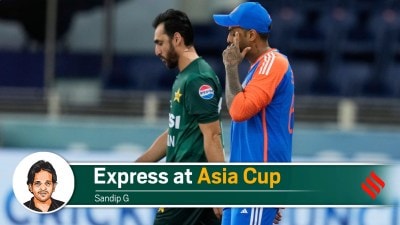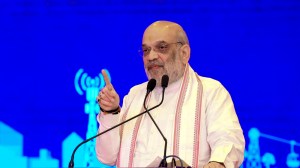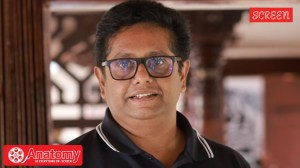It’s all nicely blended together
Three Hollywood blockbusters of the moment have a common ingredient: stars that are currently in the news for actions in their personal live...

Three Hollywood blockbusters of the moment have a common ingredient: stars that are currently in the news for actions in their personal lives. Mr and Mrs Smith commemorates the romance between Brad Pitt and Angelina Jolie that allegedly destroyed Pitt’s fairy-tale marriage to Friends star, Jennifer Anniston. Cinderella Man features Russell Crowe who courted attention recently by throwing a telephone at a hotel employee. And Batman Begins stars actress Katie Holmes, better known by far as Tom Cruise’s latest girlfriend.
The relentless media build-up of film stars’ personal lives has changed the way we watch movies. Film viewing is no longer about the audience, a dark hall and a screen. There are headlines, gossip columns, trailers, promos, behind-the-scenes info, chat shows and interviews. “Whether Brad Pitt and Russell Crowe are playing characters in films, playing themselves on talk shows or are caught by paparazzi at unsuspecting moments, their fictional and non-fictional roles blend into one huge performance piece that affects how we watch their films, now more than at any time since the star-making business began,” writes Caryn James in The New York Times. “Now the media overload creates an ambient noise around movies, a sound so pervasive that even people who don’t pay attention absorb it.”
It would be hard indeed for anyone to go into a screening of Mr and Mrs Smith and not look for the presence or absence of sparks between the lead actors or to sit through Cinderella Man without checking for signs of incipient violence in Crowe’s performance. Or not try, but for a brief second, to see Holmes through Tom Cruise’s love-struck eyes in Batman Begins. In short, we are now given the chance to escape into not one but several fantasies at one and the same time while watching a movie, namely, the story unfolding on screen and the stories based on what we know usually on an ongoing basis about the lives and relationships of the actors within.
To purists, this phenomenon would appear to be a dilution of the movie going experience. Which proud auteur would wish for a weakening of his power, to compete with the din of gossip for the attention of his viewer? It is arguably, even more potentially damaging for a serious actor who must put in an extra effort to overcome the disability of familiarity, to play a dissimilar character convincingly. But there is more than mere aesthetics at stake here. There is the far more worrying consideration that if the real world has invaded the world of make believe on such a scale, the world of make believe will have invaded the real world as well.
Count the number of times you see film stars and celebrities of a similar stature in roles unconnected with their glamorous cinematic roles in the news these days. Angelina Jolie assisting refugees for the United Nations for instance or Sean Penn reporting from Tehran for The San Francisco Chronicle. Kylie Minogue cast as a symbol for women suffering from breast cancer following her recent surgery.
The problem with this phenomenon is not just the much-touted but unverified presumption that glamour is required to front every issue but the fact that so much of what passes for a star’s real or personal life is either stage managed by a PR machine or exaggerated by a scandal hungry media.
Is it any wonder then that reality is a fragile entity in today’s world? Apparently 60 per cent of Americans do not trust the press; 21 per cent in fact claim to get their news from comedy shows. One out of three still believes that there are Weapons of Mass Destruction in Iraq. Last year’s biggest book was a pseudo-factual thriller, The Da Vinci Code. Stacy Schiff writing also in the New York Times believes that the success of Dan Brown’s fast-paced novel about a conspiracy in the Church points to a significant fact, which is that: “We’re happier to swallow a half-baked Renaissance religious conspiracy theory than to examine the historical fiction we’re living (and dying for) today.”
All these trends are present in contemporary India. The entertainment industry has never been as visible and overwhelming as it is in the country today. And films and film stars have never been taken as seriously as they are these days and with less reason. Assumptions about the demand for entertainment are shaping everything, including our priorities and the content and treatment of news. And as the recent Advani-Musharaff-VHP saga gives way seamlessly to the Arun Nayar-Liz Hurley-Pedroni drama, we should pause to think about the way the entertainment business and the PR machine is shaping our public psyche.
Photos





- 01
- 02
- 03
- 04
- 05


























